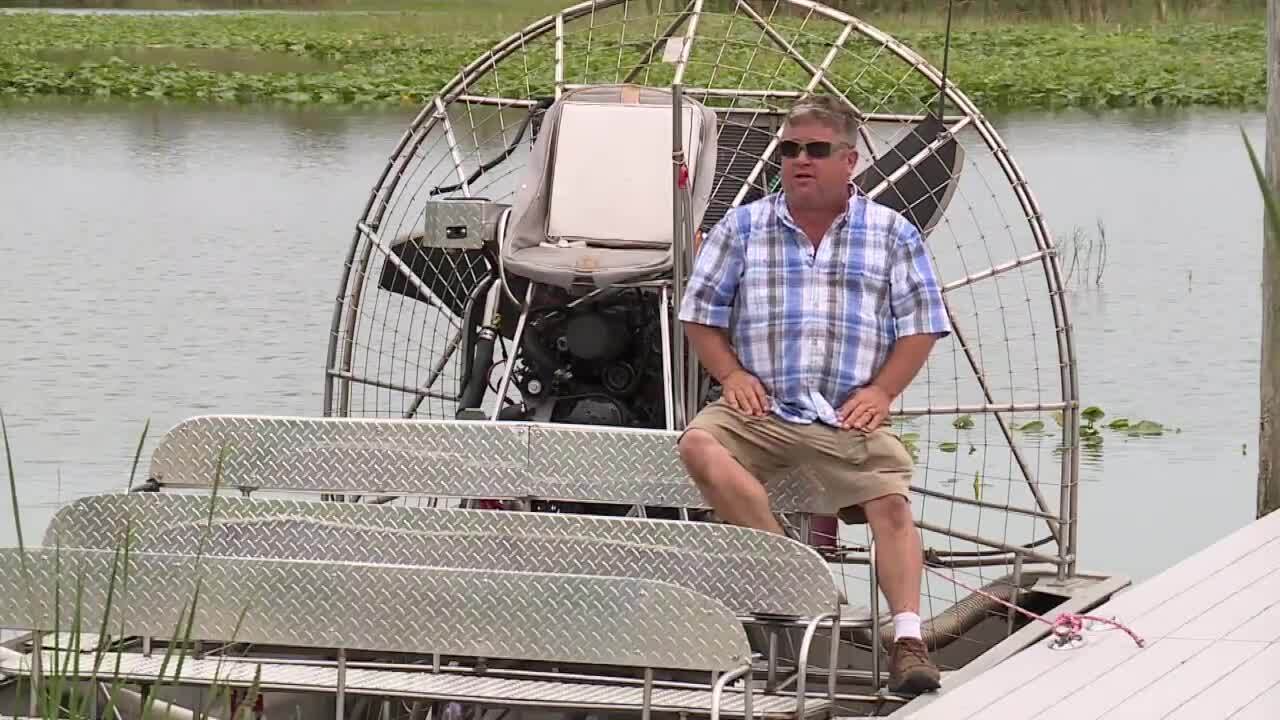OKEECHOBEE COUNTY, Fla. — The Army Corps of Engineers is weeks away from selecting its new Lake Okeechobee System Operating Manual, or LOSOM, which will determine how much water is released from Lake Okeechobee for years to come and where it will be sent.
This week, stakeholders and community leaders around the lake heard the Army Corps break down the science behind each of their five final plans.
Some stakeholders around the lake fear the lake itself stands to lose the most in all five plans.
Dr. Paul Gray, Audubon Florida's Everglades science coordinator, said the level of the lake plays a big part it the ecology of the lake, impacting wildlife and vegetation.

High lake levels can kill vegetation and harm wildlife habitats when kept too high for too long. Gray said the plans call for the lake getting deeper more often and that anything above 16 feet is considered harmful.
The Army Corps of Engineers is tasked with balancing the needs of various communities. The St. Lucie Estuary wants no lake releases, ideally. The Caloosahatchee River needs some, but not too much lake water. Communities to the south of the lake rely on lake water being stored to protect drinking water supply and provide for year-round irrigation needs.
All of that is balanced with the public health threats posed by potential algae blooms, recreational needs and navigational needs.
RELATED: Lake Okeechobe: Mother Nature's balancing act when it comes to battling toxic algae
Army Corps Col. Andrew Kelly said the priority is to "pick an array that does the most good for the most people."
Jason Ferrell's family owns Eagle Bay Air Boats on the north end of the lake. He is on the water daily.
"We see, in years past, when the lake is adversely affected, our bottom-line drops, "Ferrell said. "It all works hand in hand."
He would like the Army Corps to choose a plan that most closely models what Mother Nature originally intended.
"We need more of this flow to go south," Ferrell said.
He understands the struggle of picking the most balanced plan.

"We hate to see the coast be impacted, the east and west coast," Ferrell said. "It just looks so bad upon us. It makes us out to be the bad guys every time, and all we want is what's best for Lake Okeechobee and the environment. We believe there's a happy medium there."
Kelly said there will be more workshops this month and in July to keep digging into the impacts of each of the five final plans.
"I don't think there's going to be a universal support for any single array," Kelly said, but he said LOSOM overall will be far more balanced than the current operation plan.




